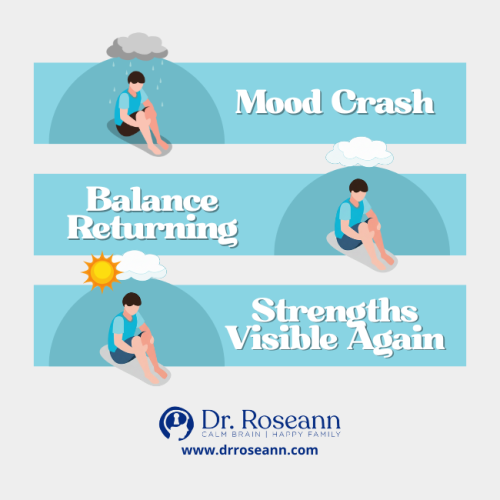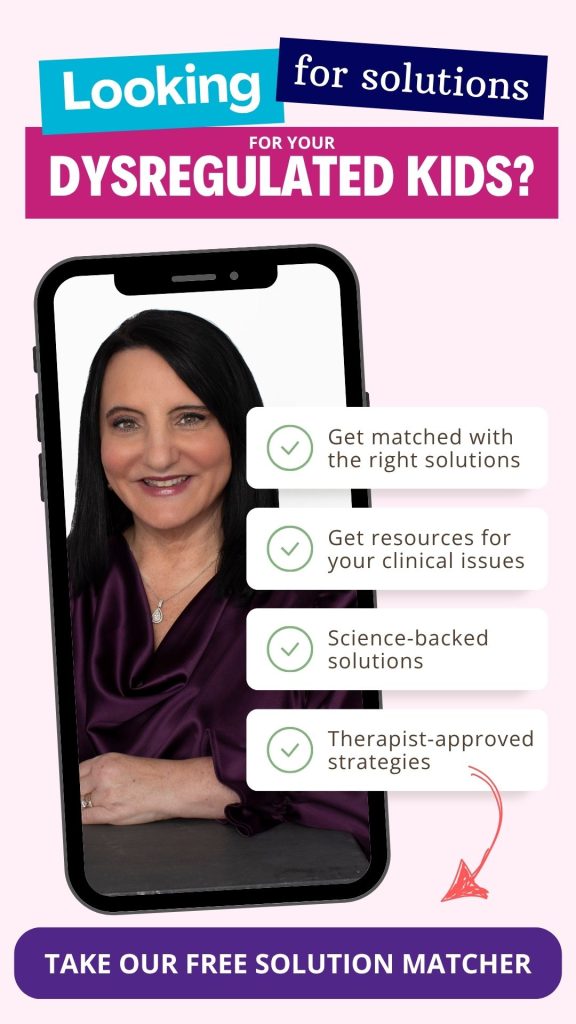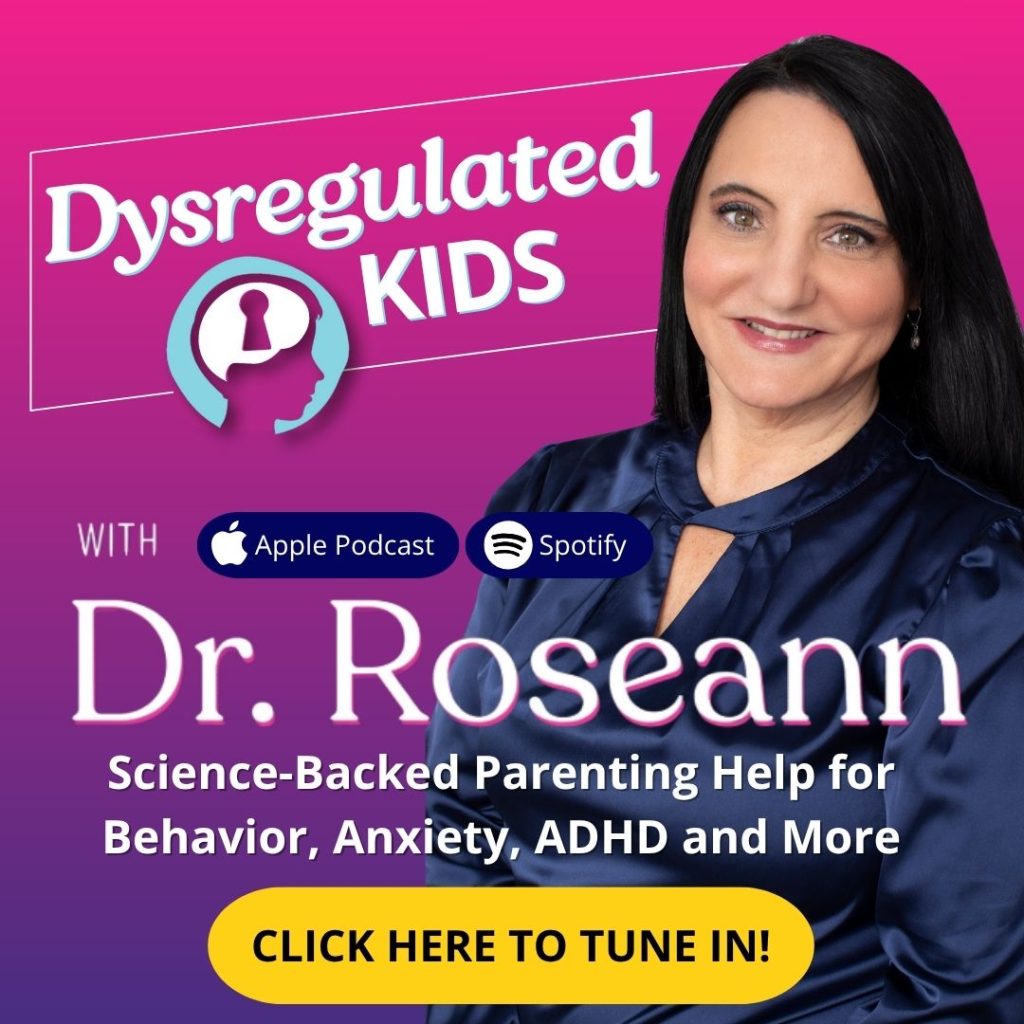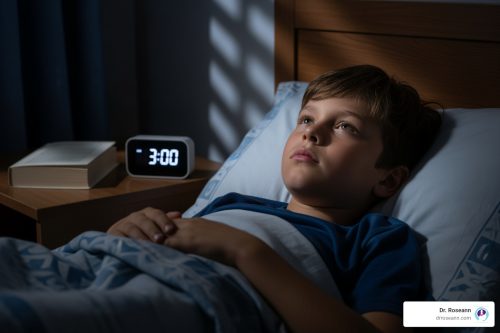Estimated reading time: 4 minutes
Ever feel like your child’s moods flip without warning? One minute they’re laughing, then suddenly tears or anger take over—and you wonder if the medication has something to do with it.
These sudden shifts, called emotional lability, can happen in kids taking ADHD meds. Think of it like a quick storm that blows in and clears just as fast. What looks like misbehavior often means their brain is struggling to stay balanced.
You’re not alone—and with the right tools, you can help your child find steadier calm and brighter moods.
In this article, we’ll look at why emotional lability happens and how you can help your child with compassion and science-backed tools. Calm the brain first, and everything else follows.
What Is Emotional Liability in Children?
Emotional lability means quick and unpredictable changes in mood or emotions. A child might laugh one moment, cry the next, and then lash out in anger minutes later.
- For parents, that whiplash can feel overwhelming. I hear it every day in my office—moms and dads exhausted, unsure if they should blame themselves, the medication, or something else entirely.
- Here’s what I want you to hold onto: behavior always tells a story. Those mood swings signal a brain struggling to regulate, not a child choosing mischief. Think of it like a nervous system sending out distress flares.
ADHD meds may unmask underlying nervous system dysregulation, not create it (Barkley, 2015).
When we calm the brain first, those flares quiet down—and your child can return to being the bright, loving kid you know is in there.
Why Do ADHD Medications Trigger Emotional Lability?
ADHD medications, especially stimulants, affect dopamine and norepinephrine—the brain chemicals that regulate attention and mood (Faraone & Buitelaar, 2010).
Sometimes this leads to:
- Mood swings (happy → irritable → sad)
- Rebound effects when meds wear off
- Heightened sensitivity in kids already struggling with anxiety or mood issues
Parent Story:
Rachel, mom of a 9-year-old with ADHD, noticed her son went from calm to aggressive after school. At first, she blamed herself. After tracking his patterns, she realized the meltdowns always came when his medication wore off.
With support, she learned how to regulate his nervous system during those “crash” periods.
Timing and regulation tools matter—this isn’t your fault. When we calm the brain first, those after-school crashes become manageable—and connection with your child gets easier.
What Are the Signs of ADHD Medication-Related Emotional Liability?
Parents often describe their child as “a different person” on medication. Watch for:
- Irritability or aggression over small frustrations
- Tearfulness or sadness without clear reason
- Overreactions (big emotions to small triggers)
- Withdrawn or flat mood when medication peaks or wears off (O’Brien et al., 2003)
These shifts aren’t misbehavior—they’re signals of a nervous system struggling to stay balanced.
Is Emotional Liability Dangerous for My Child?
Emotional lability itself usually isn’t dangerous, yet it signals something deeper—that your child’s brain feels off-balance. Those fast mood flips? They’re like storm clouds rolling in without warning, a nervous system shouting, “I can’t handle this right now.”
When ignored, that kind of emotional whiplash can ripple through a child’s whole world:
- Family stress – Constant arguments or misunderstandings wear everyone down
- School struggles – Harder focus, missed assignments, and tricky peer dynamics
- Social rejection – Kids may avoid friendships once emotions swing too wildly
- Low self-esteem – “I’m bad” or “I’ll never be enough” becomes the inner script (Shaw et al., 2014; Sobanski et al., 2010)

Here’s the truth you need most: emotional lability reflects nervous system dysregulation, not a flaw in your child or a failure in you. Parenting through it can feel exhausting, yes, though it doesn’t mean you’re falling short.
With the right support, balance returns. Once the nervous system calms, those storms settle, and the sunshine peeks back through. Your child’s strengths—compassion, creativity, spark—become visible again.
Behavior is communication, and when we calm the brain first, everything else follows.
How Can I Help My Child Regulate Their Emotions on ADHD Medication?
The good news: parents do have tools to help.
Start with nervous system regulation:
- Co-regulation: Your calm body and voice help settle theirs.
- Sensory breaks: Movement, fidgets, or quiet time prevent overload.
- Nutrition and sleep: Blood sugar dips and poor rest fuel mood crashes.
- Brain-based tools: Neurofeedback, CALM PEMF™, and other therapies target regulation (Arns et al., 2014).
Parent Story
Michael, dad of a 12-year-old, found his son’s meltdowns decreased once they built a predictable after-school routine with protein snacks and outdoor play.
Takeaway: Small daily habits stabilize moods. When you calm the brain first, those daily routines actually work.
Parent Action Steps
FAQs
Will my child outgrow emotional lability?
Some children settle with age, though progress depends on building regulation skills and having the right supports.
Should we stop ADHD meds if mood swings happen?
Don’t stop suddenly—always consult your provider. Adjustments or brain-based supports often make a big difference.
Can diet really affect mood swings?
Absolutely. Blood sugar crashes or missing nutrients can fuel big mood shifts, while steady meals support calmer emotions.
Is emotional lability the same as bipolar disorder?
No. Emotional lability in ADHD comes from nervous system dysregulation, not a long-term mood disorder.
Citations
Arns, M., Heinrich, H., & Strehl, U. (2014). Evaluation of neurofeedback in ADHD: the long and winding road. Biological psychology, 95, 108–115. https://doi.org/10.1016/j.biopsycho.2013.11.013
Barkley, R. A. (Ed.). (2015). Attention-deficit hyperactivity disorder: A handbook for diagnosis and treatment(4th ed.). The Guilford Press.
Faraone, S. V., & Buitelaar, J. (2010). Comparing the efficacy of stimulants for ADHD in children and adolescents using meta-analysis. European child & adolescent psychiatry, 19(4), 353–364. https://doi.org/10.1007/s00787-009-0054-3
Shaw, P., Stringaris, A., Nigg, J., & Leibenluft, E. (2014). Emotion dysregulation in attention deficit hyperactivity disorder. The American journal of psychiatry, 171(3), 276–293. https://doi.org/10.1176/appi.ajp.2013.13070966
Sobanski, E., Banaschewski, T., Asherson, P., Buitelaar, J., Chen, W., Franke, B., Holtmann, M., Krumm, B., Sergeant, J., Sonuga-Barke, E., Stringaris, A., Taylor, E., Anney, R., Ebstein, R. P., Gill, M., Miranda, A., Mulas, F., Oades, R. D., Roeyers, H., Rothenberger, A., … Faraone, S. V. (2010). Emotional lability in children and adolescents with attention deficit/hyperactivity disorder (ADHD): clinical correlates and familial prevalence. Journal of child psychology and psychiatry, and allied disciplines, 51(8), 915–923. https://doi.org/10.1111/j.1469-7610.2010.02217.x
Always remember… “Calm Brain, Happy Family™”
Are you looking for SOLUTIONS for your struggling child or teen?
Dr. Roseann and her team are all about science-backed solutions, so you are in the right place!












